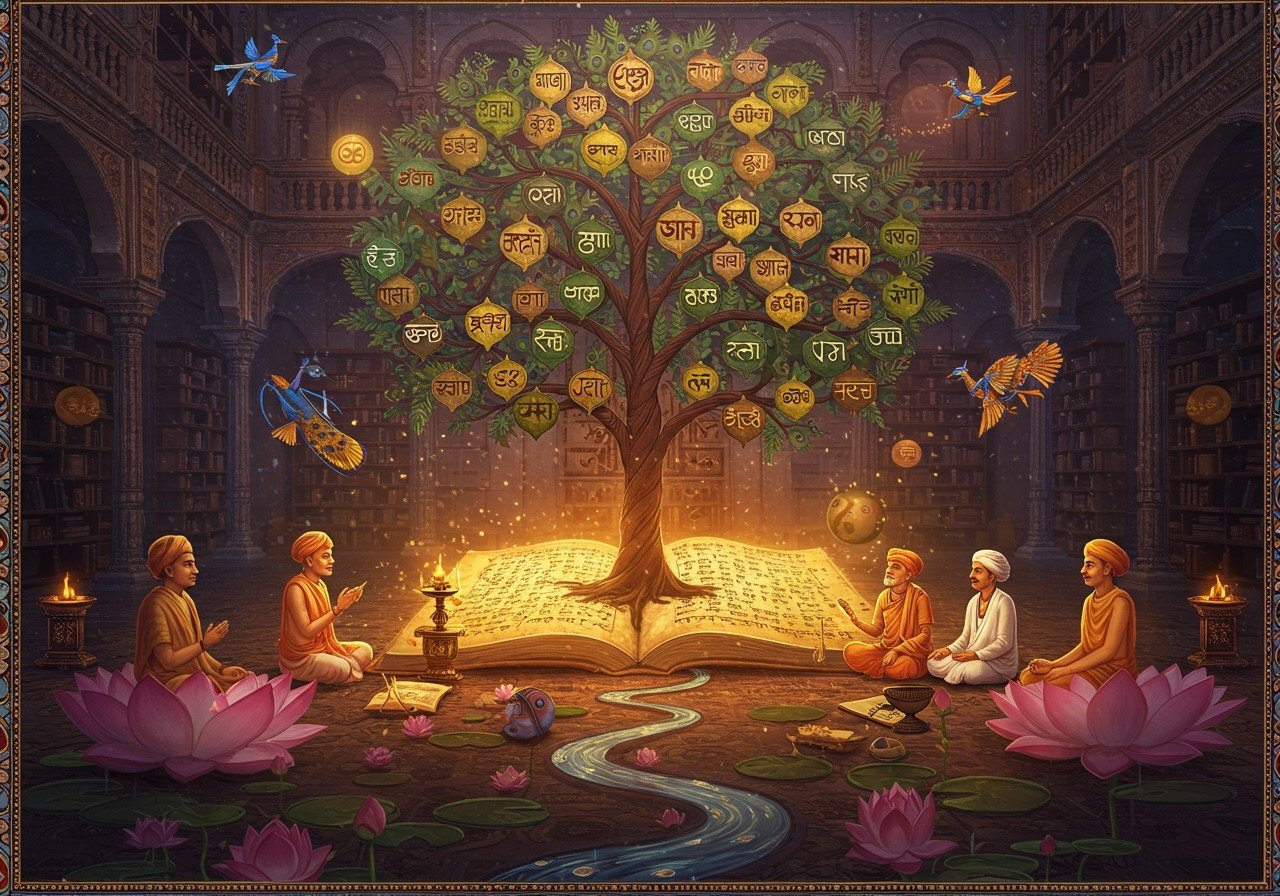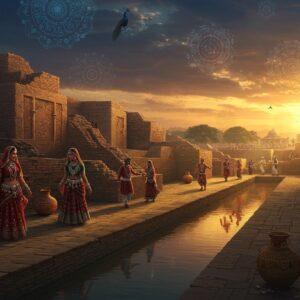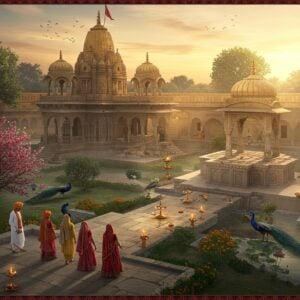
India, a land of vibrant cultures and ancient traditions, boasts an incredibly diverse linguistic landscape. With hundreds of languages and dialects spoken across the country, India stands as a testament to its rich history and cultural evolution. Language plays a vital role in shaping Indian identity, seamlessly connecting tradition with modernity. Understanding this linguistic diversity is key to appreciating the depth and complexity of Indian culture. At poojn.in, we celebrate this diversity by offering a wide selection of spiritual and cultural products catering to various traditions. Explore our collection here.
The Richness of Indian Languages
India’s linguistic diversity is truly remarkable. The Constitution of India officially recognizes 22 languages, known as scheduled languages. Beyond these, numerous other languages and dialects contribute to the nation’s vibrant linguistic tapestry. Each language represents a unique cultural identity, weaving together a rich and complex cultural narrative. Poojn.in acknowledges this diversity, offering products and resources that resonate with various linguistic and cultural backgrounds. Visit poojn.in to discover more.
- Regional Languages: Languages like Hindi, Bengali, Telugu, Marathi, Tamil, and Kannada are widely spoken across different regions, profoundly influencing local culture and communication. These languages serve as vehicles for storytelling, artistic expression, and the preservation of regional traditions, adding to the colorful mosaic of Indian culture. Discover items related to these rich traditions at poojn.in.
- Tribal Languages: Numerous tribal languages, spoken by indigenous communities across India, further enrich the linguistic landscape. These languages often carry unique cultural perspectives and traditions, contributing to the overall diversity of Indian heritage. Poojn.in recognizes the importance of these traditions, offering a platform for their representation and celebration. Explore our tribal collection here.
Language plays a significant role in shaping state identity and regional politics. It influences education, governance, and everyday life, reflecting the intricate relationship between language and culture. Understanding these languages provides valuable insights into the cultural nuances within India.
Delving into the Specifics: Key Aspects
The linguistic landscape of India is a fascinating subject of study, revealing the intricate interplay of language, culture, and history.
- Linguistic Diversity: India is a treasure trove of languages, with over 450 living languages. The 2011 Census documented over 19,500 mother tongues, highlighting the country’s vibrant multilingualism. Poojn.in embraces this diversity, offering a platform for various linguistic and cultural expressions. Discover more at poojn.in.
- Official Languages: The Constitution of India recognizes 22 languages officially, including Assamese, Bengali, Gujarati, Hindi, Kannada, Kashmiri, Konkani, Maithili, Malayalam, Manipuri, Marathi, Nepali, Odia, Punjabi, Sanskrit, Santali, Sindhi, Tamil, Telugu, and Urdu. These scheduled languages are integral to India’s cultural identity and national unity. Poojn.in acknowledges the significance of these languages, providing resources and products that cater to their respective traditions. Visit poojn.in to explore our offerings.
- Major Language Families: The languages of India belong to several major language families, each with its own unique characteristics and historical roots. These include Indo-Aryan (spoken by about 73.30% of Indians), Dravidian (spoken by about 24.47%), Austroasiatic, Tibeto-Burman, Tai-Kadai, and Andamanese. Poojn.in recognizes the richness of these linguistic families and offers a diverse range of products representing their cultural heritage. Explore our collection here.
- Historical Influences: India’s linguistic diversity has been shaped by a complex interplay of factors, including geographical diversity, historical migrations, and social structures. These influences have contributed to the evolution and diversification of languages over time, creating a rich tapestry of linguistic traditions. Poojn.in acknowledges the historical depth of Indian languages, offering products that connect with these ancient roots. Discover more at poojn.in.
- Writing Systems: India boasts a rich history of writing systems, including the ancient Indus script, Brahmi, and Kharosthi. These scripts reflect the historical depth and artistic expression of Indian culture. Poojn.in celebrates these writing systems, recognizing their importance in preserving and transmitting cultural knowledge. Visit poojn.in to discover more.
- Multilingualism: Multilingualism is a common phenomenon in India, with many individuals speaking multiple languages. This linguistic dexterity reflects India’s diverse cultural landscape and facilitates communication across different regions and communities. Poojn.in embraces multilingualism, offering resources and products that cater to various linguistic backgrounds. Explore our multilingual resources here.
- Hindi: Hindi is the most widely spoken language in India and serves as one of the official languages at the national level, alongside English. Its widespread use facilitates communication across different regions and contributes to a sense of national identity. Poojn.in recognizes the importance of Hindi, offering a wide range of products and resources catering to Hindi speakers. Visit poojn.in to discover more.
Poojn.in: Bridging Linguistic Barriers in Puja Rituals
Poojn.in understands the importance of language in religious practices. We strive to make puja rituals accessible to everyone, regardless of their language, by providing clear product descriptions in multiple regional languages. We recognize that sacred items and ritual materials are known by different names across India’s diverse linguistic landscape. For example, “guggulu,” a common puja item, is known as “గుగ్గులు” in Telugu, “ಗುಗ್ಗುಲು” in Kannada, and “ഗുഗ്ഗുല്” in Malayalam. Poojn.in caters to these regional variations, ensuring that you can find the specific items you need for your puja, regardless of your language.
We offer a wide selection of puja essentials, including guggul/guggulu in regional packaging, multi-language puja guides and manuals, and region-specific ritual items with local names. Shop now at Poojn.in for authentic puja materials with clear regional language descriptions.
Frequently Asked Questions
What languages are spoken in India? India boasts a vast linguistic diversity, with over 19,500 languages and dialects spoken across the country. Major languages include Hindi, Bengali, Marathi, Telugu, Tamil, and Urdu, among others. Hindi and English serve as official languages at the national level. This linguistic diversity reflects India’s rich cultural heritage and historical influences.
What is the role of language in Indian culture? Language is deeply intertwined with Indian culture, connecting people to their heritage, traditions, and regional identities. Each language contributes to India’s artistic expression, including literature, music, and storytelling. This linguistic diversity adds to the vibrancy and richness of Indian culture, making it a unique and fascinating tapestry.
Why is India considered a linguistic treasure? India’s incredible linguistic diversity, with its numerous languages, scripts, and literary traditions, makes it a linguistic treasure trove. Each language carries a unique history and cultural perspective, contributing to the overall richness of Indian heritage. This linguistic diversity is a testament to India’s complex history and vibrant cultural landscape.
Ramayana’s Impact on Indian Art and Literature showcases how languages have been influenced by ancient epics.
How does language influence communication in India? Language plays a crucial role in communication in India, shaping social interactions and reflecting regional identities. Multilingualism is common, with people often switching between languages depending on the context. This linguistic flexibility allows for greater communication across diverse communities, bridging cultural and regional gaps.
Small Beads Bel Mala can enhance your spiritual practice.
Embracing India’s Linguistic Heritage
India’s linguistic diversity is a vital part of its cultural identity. It’s a testament to the nation’s rich history and the vibrant tapestry of its people. Preserving and celebrating these languages is essential for future generations, ensuring that the stories, traditions, and cultural expressions embedded within them continue to thrive. As we explore and appreciate the beauty of India’s languages, we deepen our connection to its cultural heritage.


